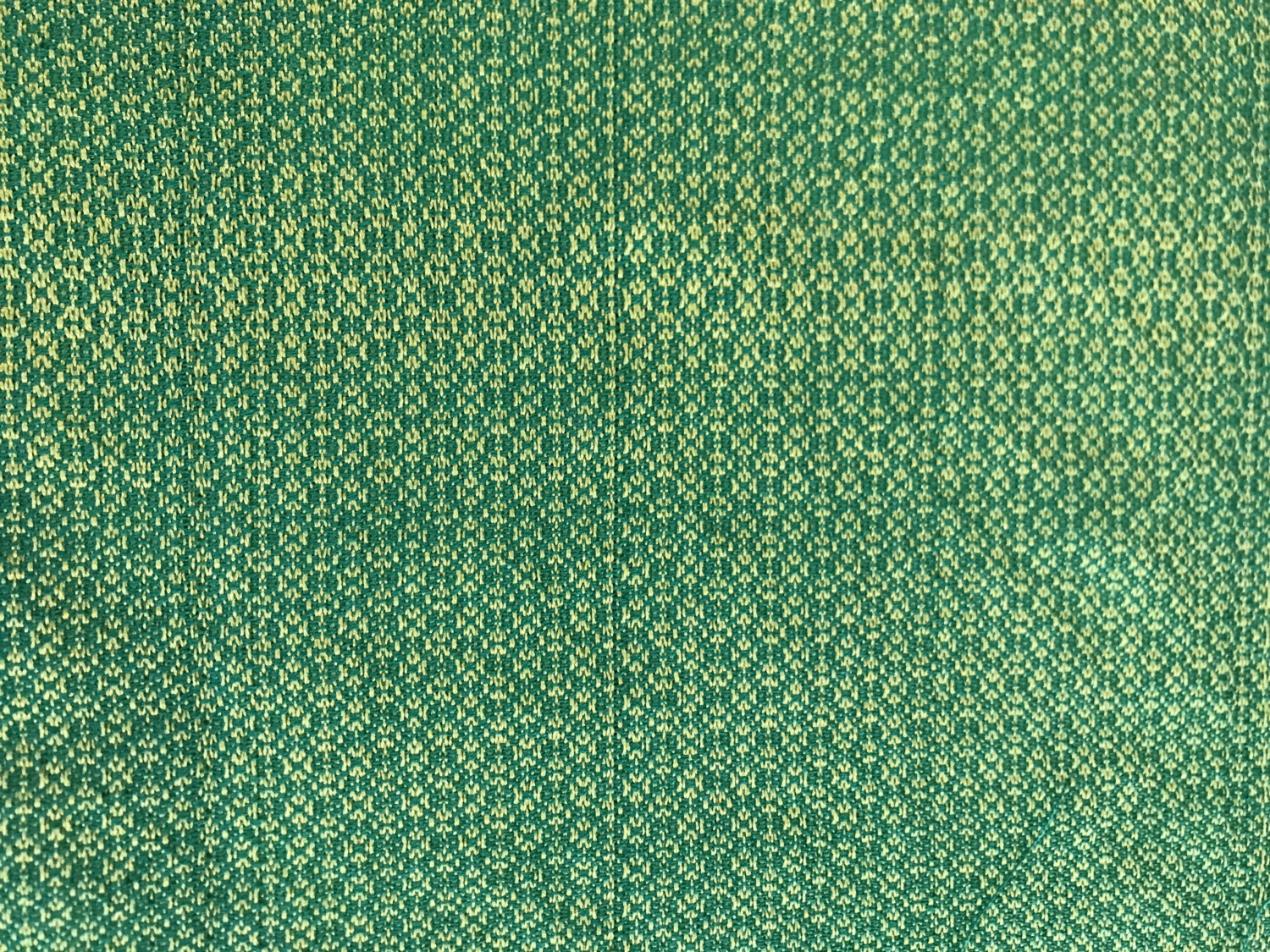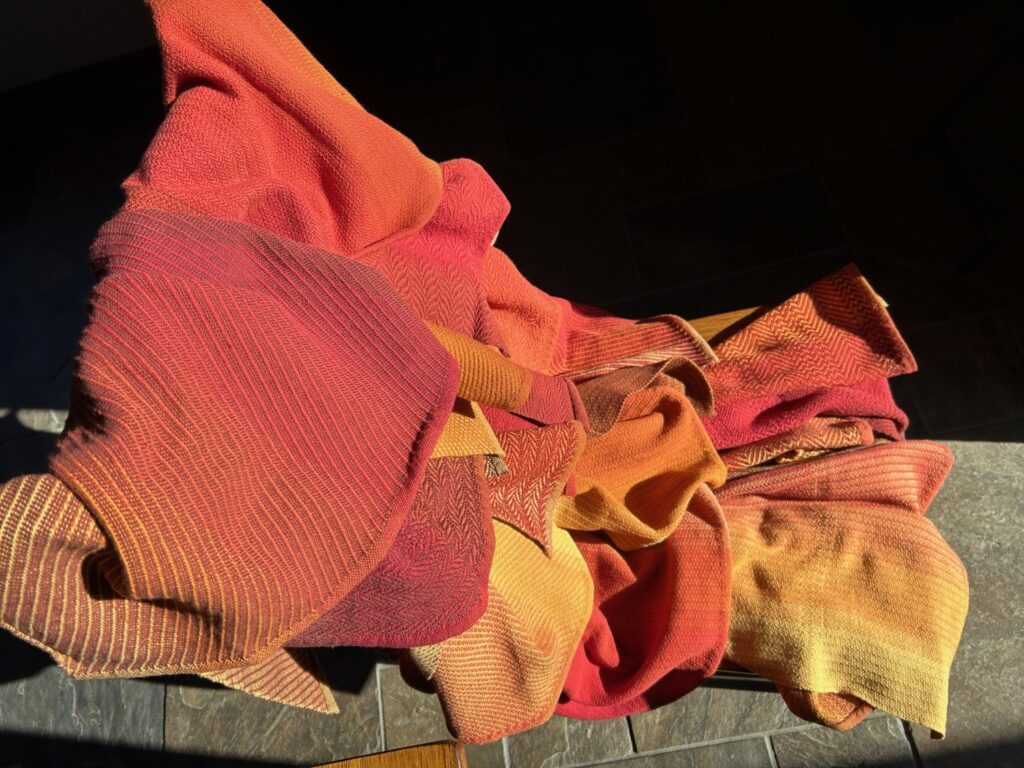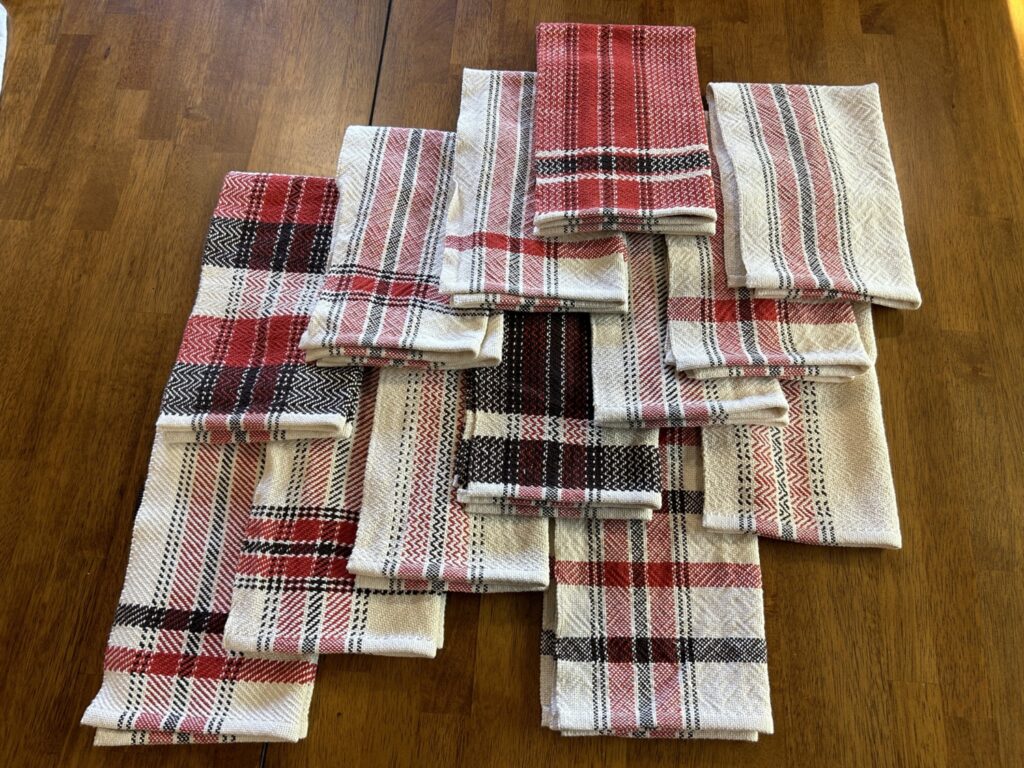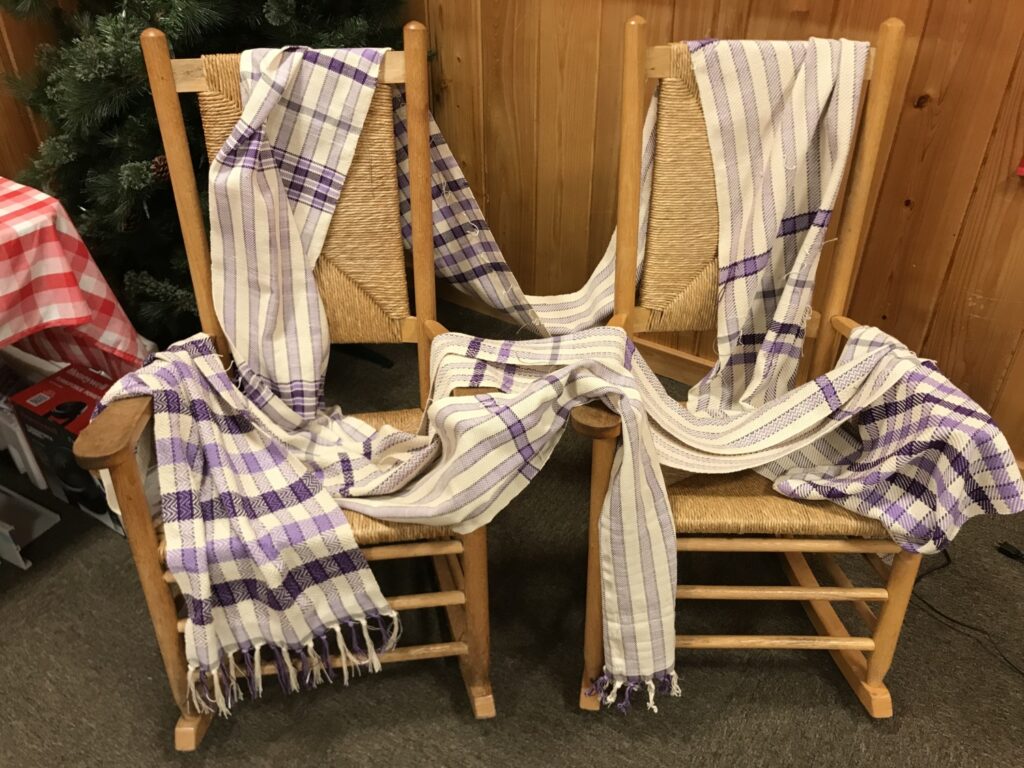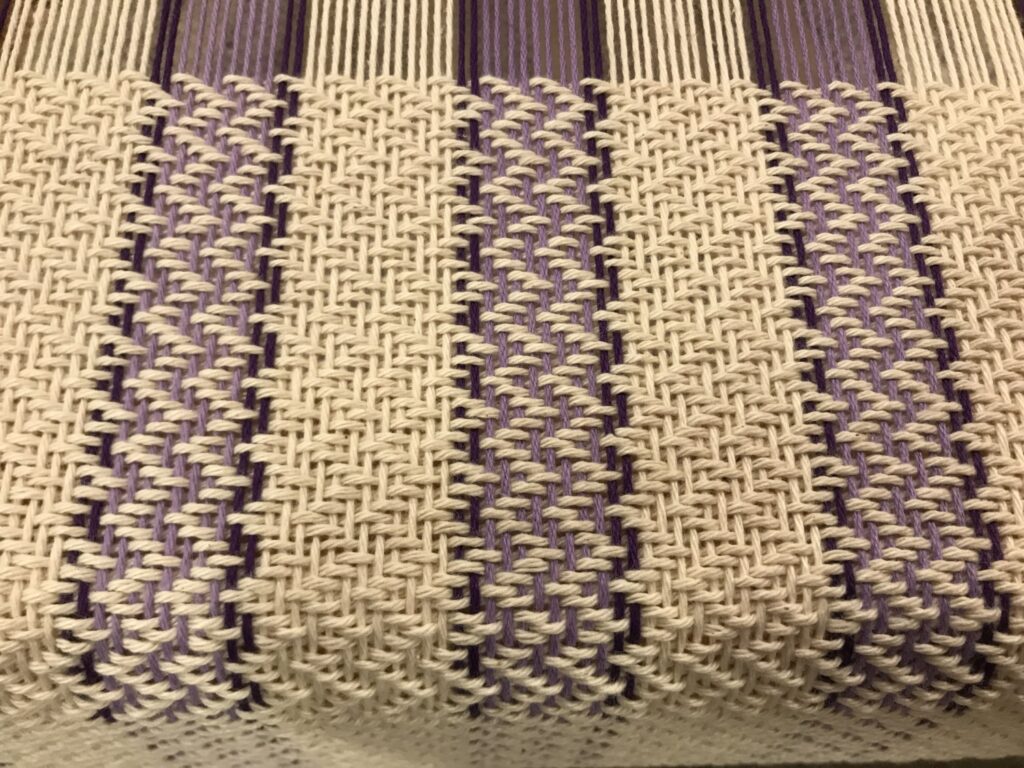Although the name of this post is 2023 Weaving, I am going to cover the last 18 months of weaving because I haven’t written much about it for a while. I have been very busy weaving a variety of things with one ambitious project and lots of the same old thing.

Last year, when Tom and I took the summer off from the National Parks, I decided to weave something that felt like cloth. I really like the towels, blankets, and scarves I have woven, but they don’t feel like cloth you could wear. After some research, I warped some very fine silk threads at 60 threads per inch. My towels are usually 12 or 20 threads per inch.

Thread count is something you usually only think of with sheets, unless you are a weaver. For some reason, we like to know the thread count of our sheets. Thread count is simply a measure of how many threads are woven into a square inch of fabric. It includes both vertical (warp) and horizontal (weft) threads. Traditionally, higher thread counts were associated with better quality sheets because they indicated a denser weave. 400 seems to be an average thread count for sheets, which means there are 200 threads vertically and 200 threads horizontally per inch.
My silk cloth had 60 threads per inch vertically and 60 threads per inch horizontally, for a thread count of 120. Weaving the cloth was a nightmare. It started with all kinds of tangling in the warp, and then I had dozens of threads break. At first I repaired them until I had so many repairs hanging off the back of the loom they were getting tangled. After that I decided to let them break and hoped no one would notice.
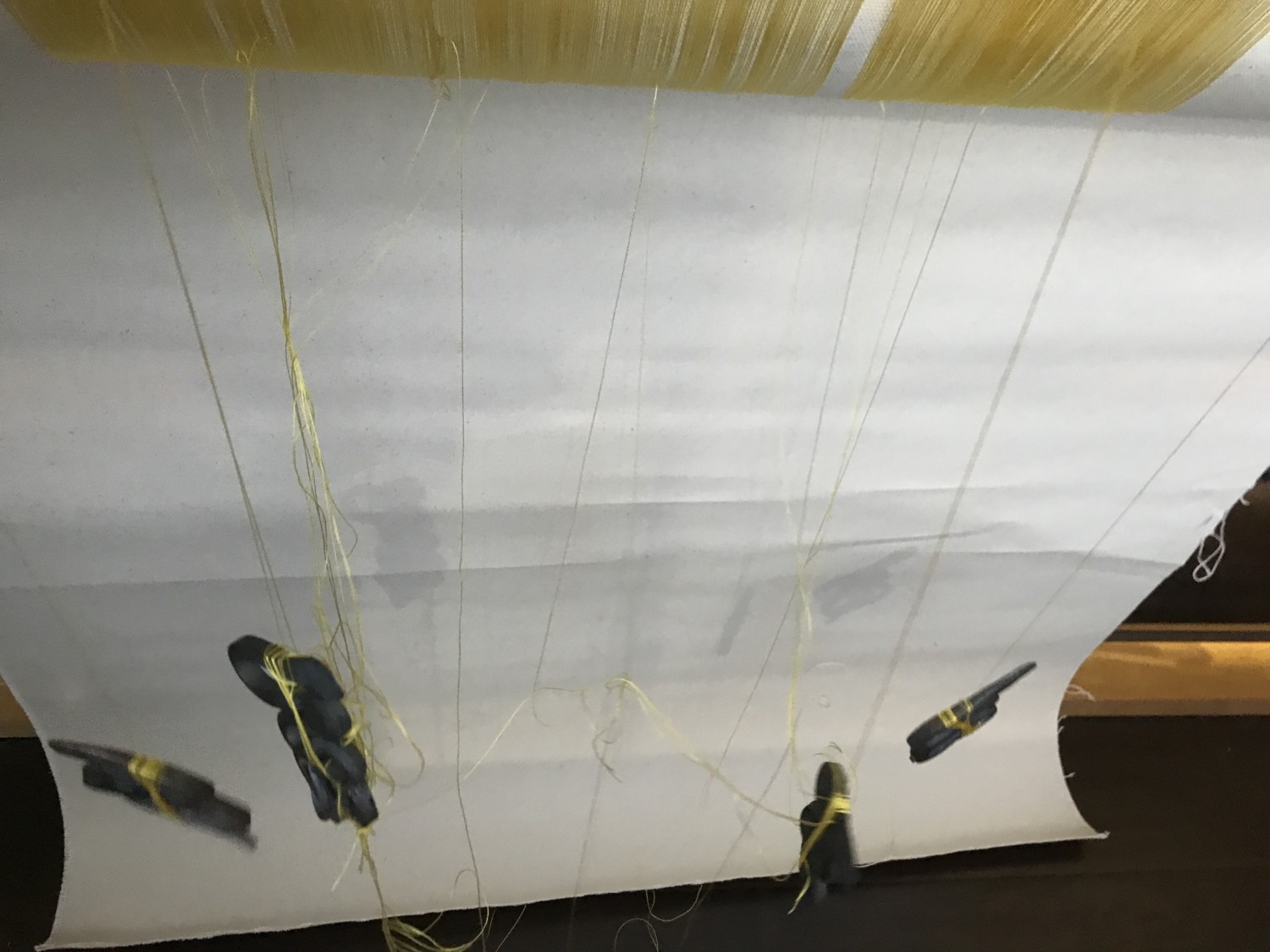
Believing that every trial is a great learning experience, I kept with it until I wove six silk handkerchiefs. The finished product was beautiful and felt like a cloth you could wear. I can’t say I will be weaving anything that fine again for quite a while, but I did learn a lot.

Once I wove all the silk on my big loom, I warped on a fall ombre warp. I used six colors: gold, pumpkin, rust, cayenne, brick, and red brown. In between each color I blended the two adjacent colors so that there wasn’t a clear line between them. Then I wove with a straight twill or undulating twill pattern. I got 13 towels from this and I love the colors and the different patterns.

My 2023 weaving was mostly taken up with hand towels. Ranger Jamieson and I ended up making 5 dozen towels during the time I was at Fort Frederica. All of them sold out as soon as they were put on the shelves. I continued those towels at Cumberland Gap, although I gave them to the rangers instead of selling them. Because I was the only one weaving, I only made three dozen during my time at the park.
My basic towels are 12 threads per inch in the warp and are thick and absorbent. People are often surprised at how soft they are when they compare them to the stiffness on the loom. The towels are usually striped and I try to use colors that you would get with natural dyes. Because they are 12 threads per inch, I can usually get them warped in a short amount of time. This is good for demonstrating because watching someone warp a loom isn’t as interesting as watching them weave.
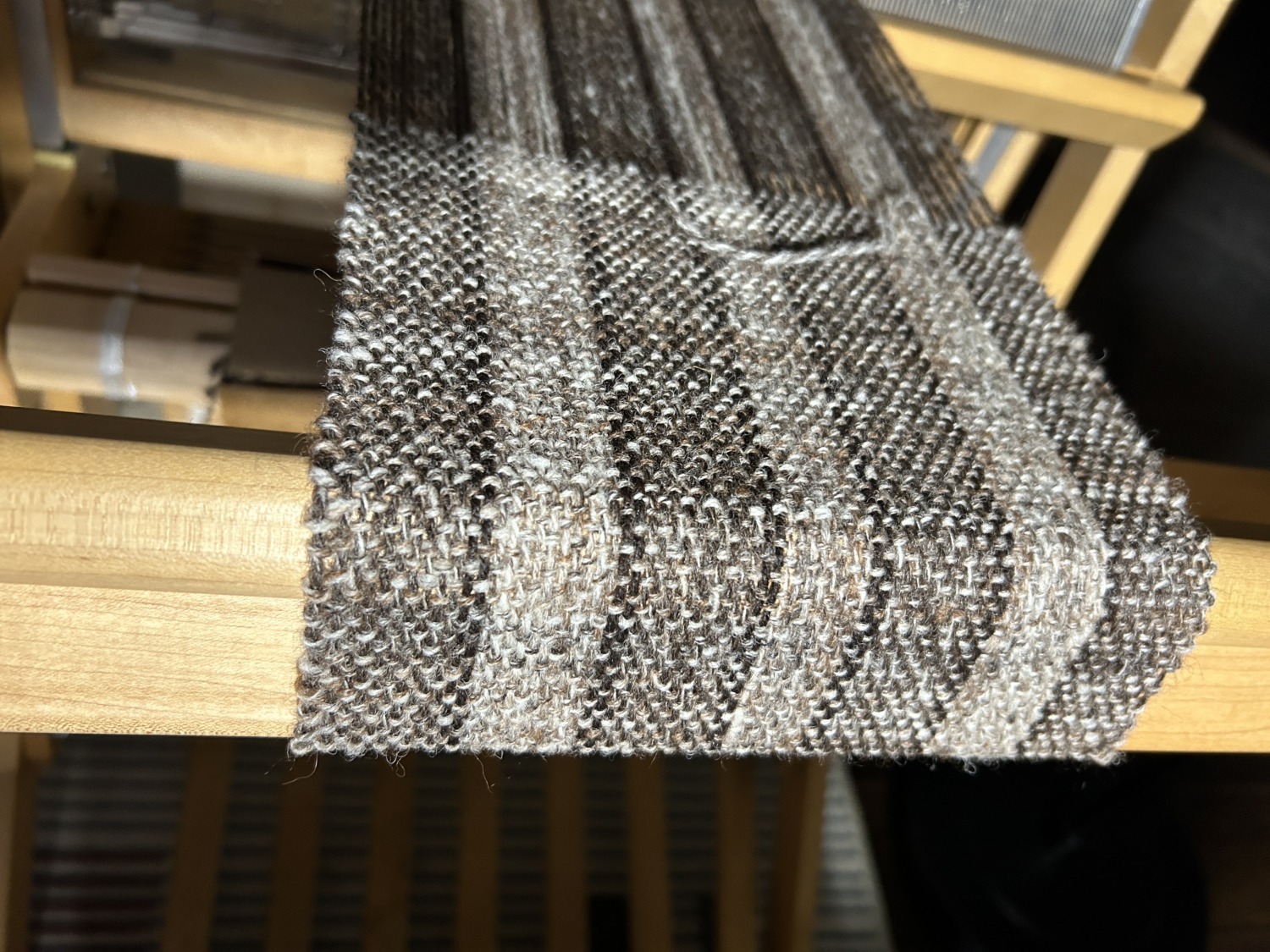
When we got back from Cumberland Gap, I realized that I had a lot of handspun yarn stored up. I sorted it out into gray, brown, and white and I have been weaving scarves from this. They weave up fast and it is nice to have a pile of potential gifts.
The scarves that are currently on the loom will probably finish up my 2023 weaving. When I finish them I will warp my little loom for more towels, in preparation for heading back to Fort Frederica.
I love weaving and enjoy every part of it, from the design to the warp to the actual weaving. What are you doing that is giving you joy these days?

